At any given time, there are thousands of naturally-occurring bacteria in your mouth living on the surface of your teeth. Excess bacteria can be removed from your teeth through regular brushing, flossing, and routine dental cleanings.
Dental cleanings usually include:
Plaque Removal
Plaque is a pale film formed from the combination of bacteria, food remains, and saliva. The bacteria are toxic and potentially cause cavities and gum inflammation unless removed.
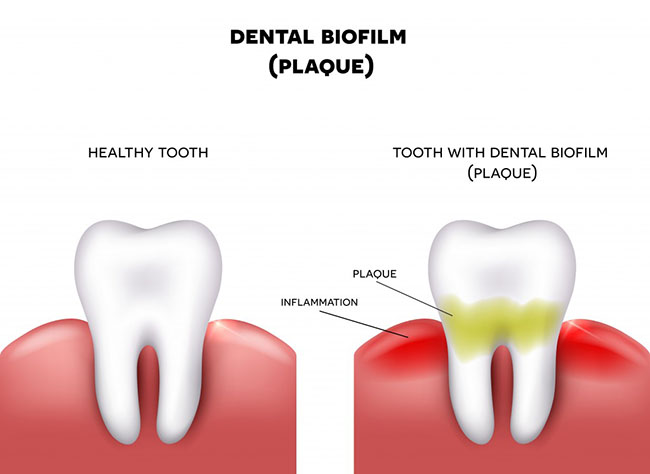
Tartar Elimination
Tartar (also referred to as calculus) is a calcified plaque that builds up on the surface of the tooth. It usually forms below or above the gum line and can only be cleaned with specialized dental tools by a dental professional.
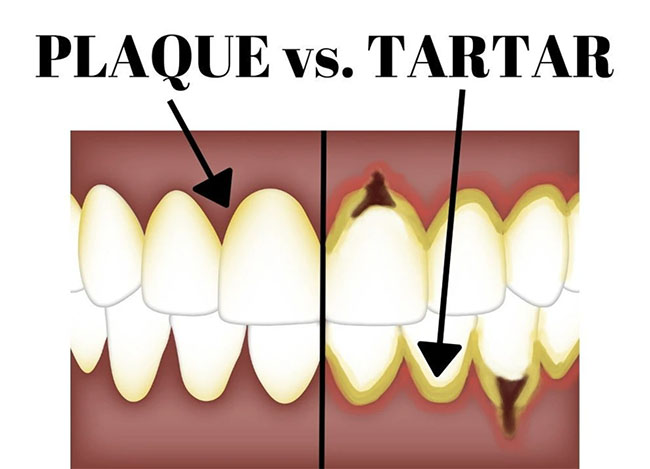
To effectively remove tartar and plaque, we first need to know exactly where the deposits are. Some are visible above the gumline, while others will require a deeper inspection. During a dental exam, your dentist may take x-rays of your teeth to see the position of your teeth, but also look for cavities and tartar deposits.
Learn More About Plaque & Tartar
Teeth Polishing
Helps get rid of stains and plaques that exist on the teeth to give your teeth a cleaner appearance.

Types of Dental Cleanings
There are four types of dental cleanings, and upon dental evaluation during an oral exam, we will determine the best option for you depending on the amount of plaque and tartar on your teeth.
1. Prophylaxis Dental Cleaning
The word prophylaxis means “to prevent disease”. A dental prophylaxis, otherwise known as a routine cleaning, is a procedure is performed on healthy patients who just need a little maintenance in order to ensure oral health, and should be part of regular dental hygiene. A prophylaxis cleaning is an important dental treatment for stopping the progression of gingivitis, gum disease, and tooth decay.
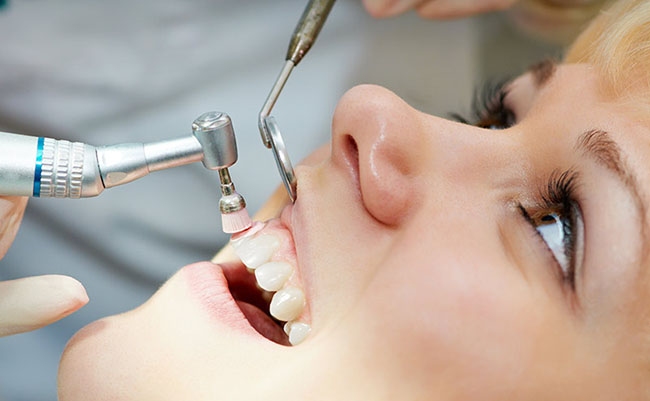
During this procedure, your teeth will be thoroughly cleaned, by removing plaque and tartar from the front, back, and sides of teeth using a dental scaler or water stream. Most dental patients only require this type of cleaning, especially if they have kept up on daily dental hygiene and semi annual dental appointments.
Recommended once every six months by the American Dental Association, routine dental cleanings are a great way to ensure your oral health! Prevent dental issues caused by bacteria growth, by removing excess plaque and tartar (where bacteria is found).
Read More2. Scaling and Root Planing
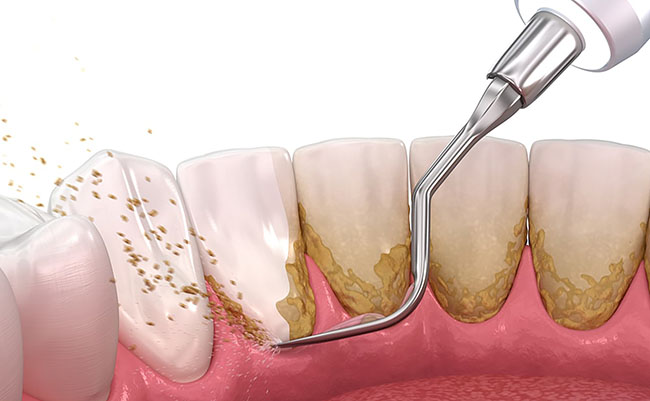
Scaling and root planing dental cleanings, also referred to as deep cleanings, is a slightly more invasive teeth cleaning procedure (although it is non-surgical) which involves deep cleaning of the teeth and gum pockets in order to treat gingivitis and periodontitis, by removing tarter and plaque built-up underneath the gum line, and also by creating smooth and clean root surfaces.
Deep cleanings for gingivitis are usually completed in a single dental appointment. Deep cleanings for periodontitis may require multiple appointments and local anesthetics, depending on the severity.
Our registered dental hygienist will recommend a deep cleaning if you are showing any signs of periodontal disease (gum disease). Some common symptoms include red, swollen, bleeding, or receded gums; as well as bad breath.
To determine if you have periodontal disease and if a deep cleaning can benefit your oral health, schedule a consultation with us today.
3. Full Mouth Debridement
A full mouth debridement is a type of deep dental cleaning used to remove tartar and plaque in all areas of the mouth. While this procedure is aimed at individuals who have not visited the dentist in several years, and are likely to have a fair amount of plaque built-up on the gums, teeth and in between teeth; not everyone who has not visited the dentist in a while receives a full mouth debridement.
The first thing we do is perform an oral examination to determine what type of cleaning is the best option for you. After your initial oral exam, we will decide whether a routine prophylaxis teeth cleaning is enough or if a full mouth debridement is needed before the prophylaxis cleaning.
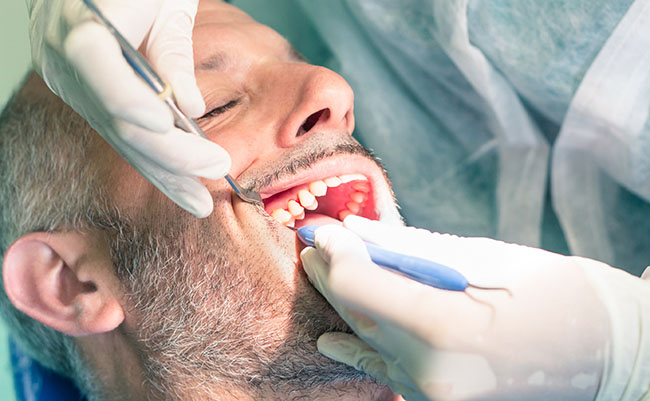
During a full mouth debridement, plaque is first removed with a scaler tool. Because tartar is hardened plaque and it has been in place for awhile, a special electric tool is usually required to loosen and remove tartar from the teeth. Once this is complete, a regular prophylaxis cleaning will be performed.
4. Periodontal Maintenance Cleaning
You might think that dental checkups are always the same. While both regular cleanings and periodontal maintenance are performed on a routine schedule, they differ in that one is a preventative measure, and the other is a treatment.
Periodontal maintenance is a routine dental cleaning for patients with periodontal disease, those who had a periodontal procedure, or present other serious oral concerns. This type of cleaning is deeper and it targets periodontal pockets. Periodontal maintenance is for patients with periodontal disease.
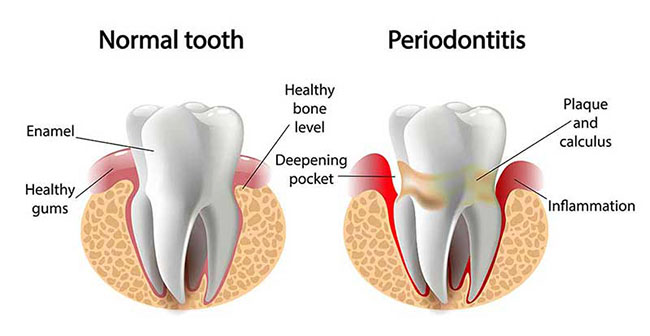
Similar to a regular teeth cleaning, periodontal maintenance removes tartar buildup from the teeth. Unlike a normal, preventative cleaning, periodontal maintenance is a treatment prescribed to combat periodontal disease. It involves both scaling and root planing, meaning tartar must be removed from deep between the teeth and gums.
During a periodontal maintenance appointment, our hygienist will remove tartar build up from in between your teeth and gums down the entire length of each tooth, stopping where the gum, root and bone meet. Your hygienist will carefully monitor the depth of each pocket in your gums and irrigate these pockets with antiseptic medications, if inflammation or infection are present.
The type of dental cleaning we choose to use will depend on what we find during your dental exam. While all of these dental cleaning methods have the same basic concept, they each offer a slightly different approach based on each specific case.
Now that you understand the four different types of teeth cleanings, only one question remains: how long has it been since your last dental cleaning?
Schedule your next cleaning with us today!

